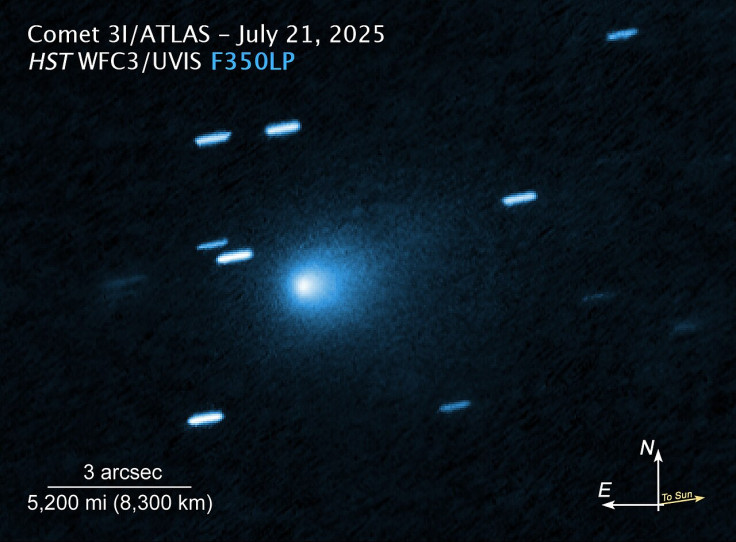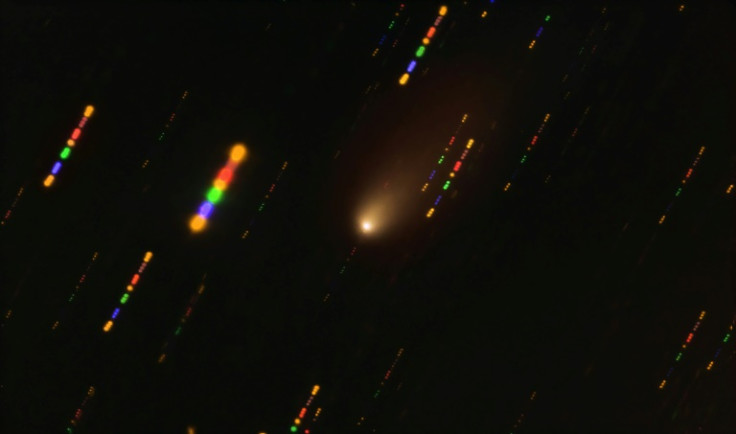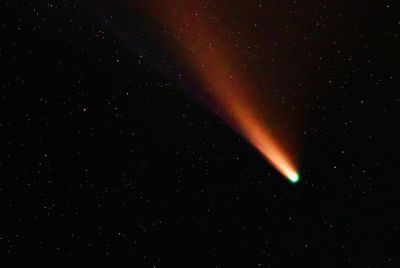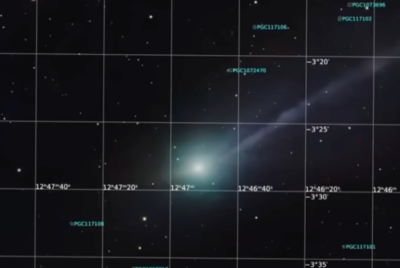Is 3i/Atlas An 'Interstellar' Visitor? New Updates Show Mysterious 'Metal Outgassing' That Make It Look More Spaceship Than Comet
Scientists have detected traces of nickel but little iron, sparking debate about its chemistry and ruling out artificial origins

3I/ATLAS, also known as C/2025 N1, is an interstellar object now passing through our Solar System. Since its discovery, it has drawn intense interest from astronomers for its chemical make-up and for what it might reveal about materials formed beyond our star system. Researchers are using some of the world's most powerful telescopes to study its composition and behaviour as it nears the Sun.
Unlike most known comets, 3I/ATLAS has shown early water release far from the Sun and unusually high levels of carbon dioxide. These signs suggest it formed under very different conditions from those in our Solar System. Its carbon-rich chemistry challenges assumptions about how icy bodies develop in deep space and provides a glimpse of how planetary materials might vary across the galaxy.
Recent reports of possible 'metal outgassing' have intensified debate about its origins. A small number of online commentators have speculated that 3I/ATLAS could be an artificial object, though astronomers say there is no evidence for this. Most scientists regard it as a natural body whose unusual chemistry is fuelling understandable curiosity.
What Makes 3I/ATLAS Different
3I/ATLAS is the third confirmed interstellar object to pass through our Solar System, following 'Oumuamua in 2017 and 2I/Borisov in 2019. Infrared data from the James Webb Space Telescope shows its coma contains roughly eight times more carbon dioxide than water. The Swift Observatory has also detected hydroxyl emission, confirming that water is breaking down even 3.5 astronomical units from the Sun, where such activity is normally weak.

Astronomers suggest these anomalies may reflect how the object formed around another star, where temperatures and radiation levels were different from those in our own system. The European Space Agency says this makes 3I/ATLAS a rare opportunity to study planet-forming materials created under alien conditions.
The Metal Emission Question
Preliminary observations suggest the object is releasing traces of nickel in its surrounding coma, while iron remains largely undetected. Data from the Very Large Telescope indicates that this imbalance is unusual, as nickel and iron normally appear together in cometary materials. Researchers say such emissions could arise from chemical reactions involving metal-organic compounds or from the gradual release of dust exposed to solar radiation. These explanations are seen as more likely than any artificial cause.
Scientists involved in the work have emphasised that the results are not yet peer-reviewed and need further verification through continued observation. Additional data expected in early 2026 may clarify how metals are distributed and released within the object.
Comment
by u/ChallengeAdept8759 from discussion
in space
Comment
by u/ChallengeAdept8759 from discussion
in space
Comment
by u/ChallengeAdept8759 from discussion
in space
Scientific Consensus
Despite its unusual chemistry, the majority of scientists regard 3I/ATLAS as a natural interstellar comet. They note that unfamiliar compositions are to be expected from material that formed around another star. The lack of strong non-gravitational acceleration, sometimes cited as evidence of design, can also be explained by symmetrical gas release from opposite sides of the nucleus.
For now, 3I/ATLAS remains one of the most unusual interstellar objects ever recorded. It appears to be a natural body with distinctive chemical features, including traces of metal emissions that continue to puzzle researchers. Although speculation about an artificial origin persists online, current scientific evidence supports the view that it is a naturally formed object passing through our Solar System.
© Copyright IBTimes 2025. All rights reserved.





















